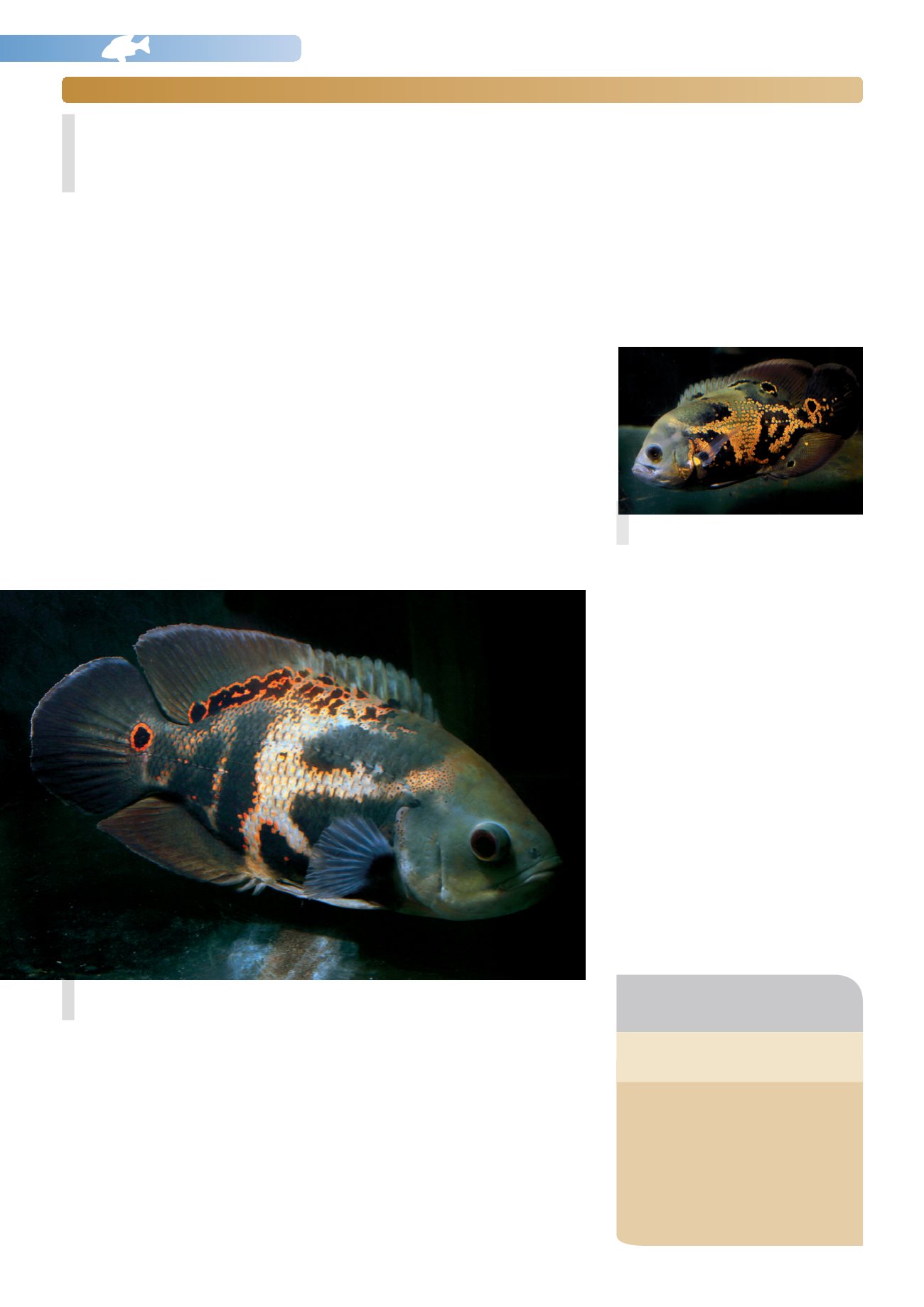
NEWS112
42
Large cichlids fromSouthAmerica arenot always themost popular of aquarium fishes.Leaving aside their physical
size, they like todig, regard smaller tankmates andaquaticplants aspart of their diet,andat breeding timemake it
abundantly clear to every other occupant of the aquariumwho is cock of the roost. For this reason themajority of
aquarists prefer to look at these impressive fellows at the zoo rather than at home.Withone exception:
Astronotus
ocellatus,
theVelvetCichlidorOscar.
Oscars
byWolfgangLöll
he unusual name ”Oscar” for this
cichlidhasbecomeestablished inter-
nationally, but is also known in English as
theVelvetCichlidorMarbledCichlid.
Why theOscar iscalledOscar
To be honest, nobody really knows the
preciseanswer,though it iscertain that the
name originated in the USA. In 1936 an
article by E. W. Clarke on Astronotus
Evergreens
T
synonymsofA.ocellatus,but in theviewof
some people at least this is undoubtedly
incorrect.
Oscars in theaquarium
The firstOscarswereexported toEurope in
1929. Because they are relatively
undemandingandattractivelycolored they
wereamong the favorite large cichlids that
people brought back from SouthAmerica.
We mustn't forget that in the past
importations were made by ship and
animals were usually brought back by
seamen to supplement their income. This
meant that the fishes were in transit from
Brazil for 3-4 weeks, often longer, in so-
called fish cans. Although we shouldn't
Lexicon
Oscars
Astronotus:
means ”star-back”
crassipinnis:
means ”with fatfins”
ocellatus:
means ”witheye-spot(s)”
zebra:
bedeutet ”(striped likea) zebra”
Adult wild-colored Oscar,
Astronotus ocellatus
. The spots in the dorsal-fin region are typical of the
species. All photos:FrankSchäfer
appeared in the hobby magazine The
Aquarium. Clark owned a pair called Lena
and Oscar. In 1949 Gene Wolfsheimer
reported in The Aquarium Journal that
aquarists in California were referring to
Astronotus cichlids as Oscars (Wayne
Leibel, AquariumUSAAnnual 2001). But it
is also possible that the word Oscar is a
corruptionof the scientific name or of the
Tupi word acara for all sorts of large
cichlids. Tupi is the language of the
aboriginalpeople that lived inBrazilbefore
Europeansarrived in theAmericas.
Widespread
Astronotus originate from South America,
where they live in themajor rivers of the
Paraguay,Amazon, andOrinocodrainages,
aswell as thoseof theGuiana Shield.They
are prized and popular as food fishes
throughout their range. Nobody knows
howmany species of Astronotus actually
exist.Thegenus is, toput itpolitely, inneed
of revision. Generally speaking, only two
species are recognized by science, A.
ocellatus and A. crassipinnis, but a total of
seven species have been described in the
past. The majority are now regarded as
AdultOscar of theRedTiger cultivated form.


